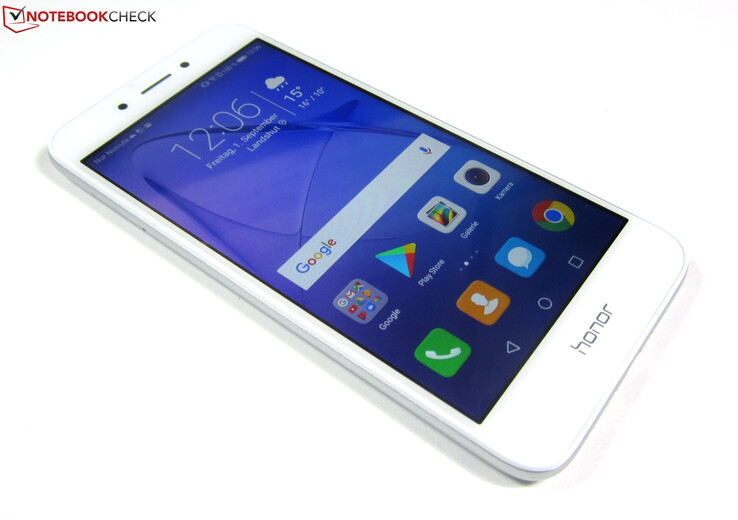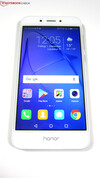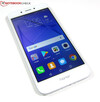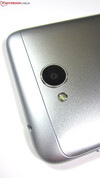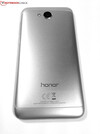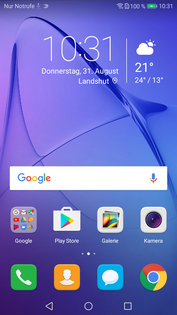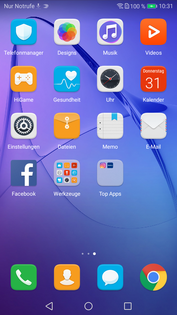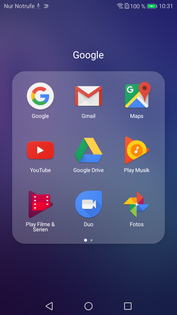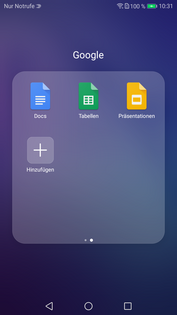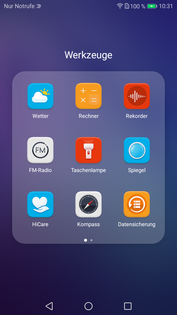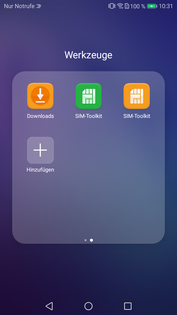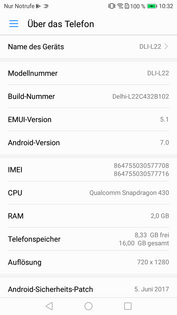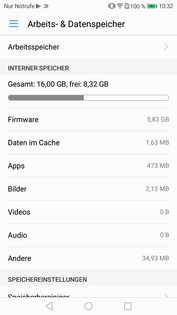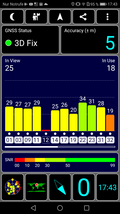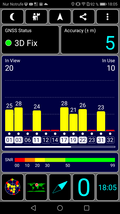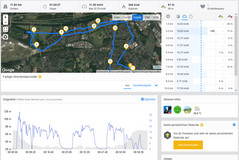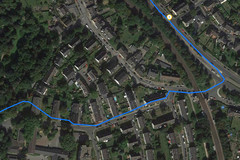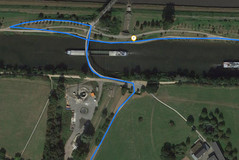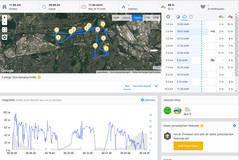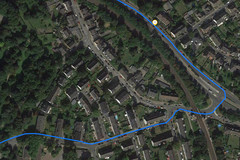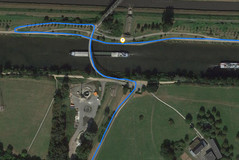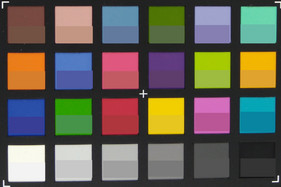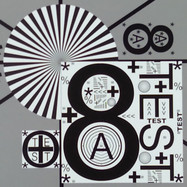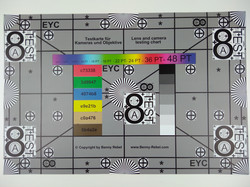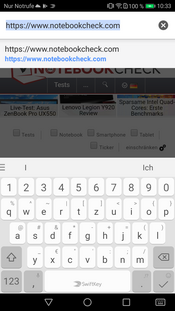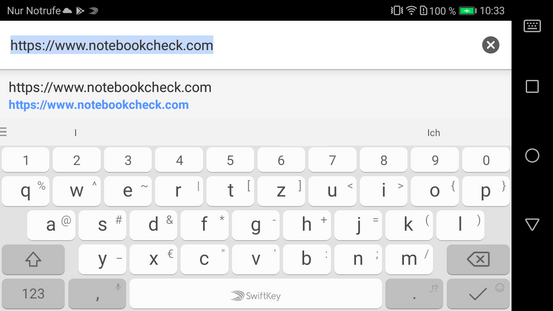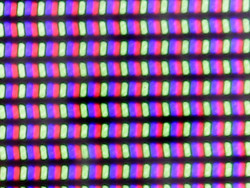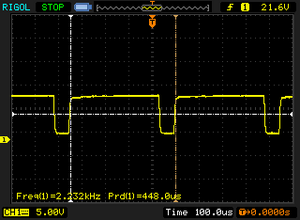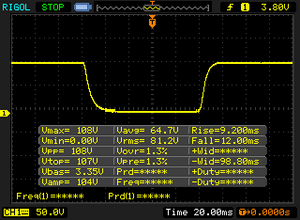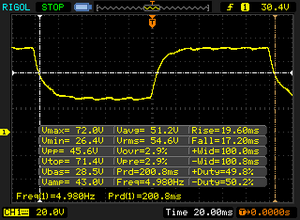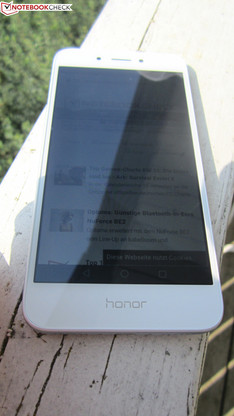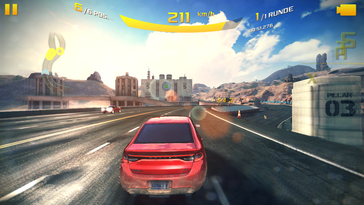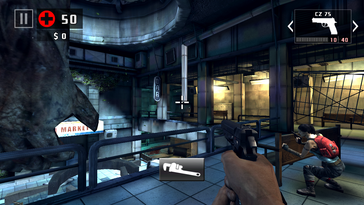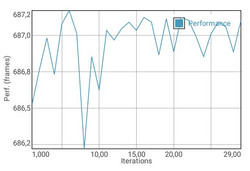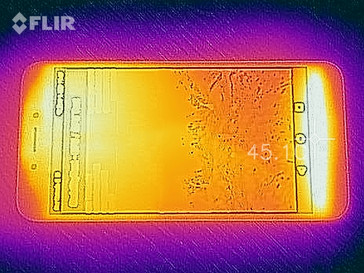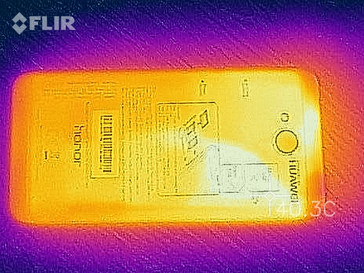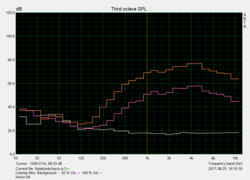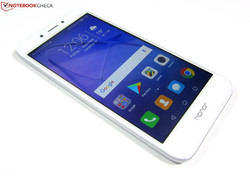Honor 6A Smartphone Review

For the original German version, click here.
Honor has made a name for itself in the past few years, for selling affordable but powerful and well-equipped smartphones. Huawei's subsidiary is following the same line of thinking for its Honor 6A. The 5-inch smartphone belongs to the range of entry-level devices and offers an HD display, a 13-megapixel camera with phase detection autofocus, Wi-Fi 802.11b/g/n, LTE and 16 GB of storage in a case that is 8.2 mm (~0.32 in) thin and made of aluminum and plastic - and all of this for about $200. Inside, it is powered by the octa-core SoC Qualcomm Snapdragon 430, 2 GB of RAM and Android 7.0.
In the highly competitive entry-level segment, the Honor 6A has managed to make itself noticed, but it is not a superphone. Competitors such as the Lenovo Motorola Moto G5, the Nokia 3, the manufacturer's own rival Huawei Y6 (2017), the Samsung Galaxy J3 (2017) and the Sony Xperia XA all offer similar features and are available online, for about $10 to $20 less.
Case
"Metal case" and an "entry-level device" are usually two words that do not go together in the world of smartphones. But then came the Honor 6A, which manages to combine the two. Similar to the Nokia 3, the case of our test unit is made partly of aluminum, which, unlike the Nokia 3, covers almost the entire back cover. The slightly roughened surface of the back cover means that the smartphone is very easy and comfortable to hold. The Honor 6A also has rounded-off edges and corners, which make it visually and sensually appealing. The case comes in three color options: Gold, Gray and Silver.
The finish of the two narrow sides and the frame that connects display and back cover are made of plastic, but due to the identical color they seem to melt together with the metal parts and also have a nice feel. The case was basically resistant to warping and pressure, all we noticed were small waves on the screen when we put very high pressure on the display. But as this effect is minimal, it is not a real problem.
Connectivity
The Honor 6A is using a rather fast octa-core SoC, the Qualcomm Snapdragon 430, which combined with 2 GB of RAM ensures a smooth operation. The smartphone can be expanded via a hybrid slot for Nano-SIM or microSD card. If you wish to use two Nano-SIM cards in the phone, you will have to give up the microSD slot and make do with the available storage. However, be aware that out of the 16 GB of internal storage, the Honor 6A only has 8.3 GB available for free use ex-works.
Internal storage can be expanded with a microSD card by up to 128 GB, but you can only put photos and other media files on the memory card. We did not manage to outsource any apps to the microSD card in our test. There are also a few other things that will need to be accepted: Instead of an easy-to-use USB Type-C port, the phone has only a Micro-USB port with 2.0 speeds. You will also not find a fingerprint sensor on the Honor 6A, although the Lenovo Motorola Moto G5 shows that this can be included in an entry-level device.
Software
The Honor 6A has a current version of the Google operating system: Android 7.0 Nougat. The manufacturer has also added its well-known interface EMUI, version 5.1. There are only a few software additions, which is good considering the rather sparse available storage. Apart from the standard Google apps such as Chrome, YouTube and Gallery, the phone also has some useful tools installed, including the support app Huawei HiCare, which is a tool for backing up data, and a SIM toolkit.
Honor has been a little negligent in terms of security for the 6A. It does have a virus scanner from Avast included ex-works, which can be found under "Security and Privacy" and automatically updates on a regular basis. However, the Android security patches were not up-to-date at the time of testing (they were from June 5th 2017 at the beginning of September).
Communication & GPS
The Honor 6A supports GSM, UMTS and LTE. However, the manufacturer has not elaborated on which channels it uses to communicate and how fast uploads and downloads should go - all the information you get from the specification sheet is "LTE". But the SoC cannot support higher than LTE cat. 4 (downloads up to 150 MBit/s) anyway. Reception was always very good during testing and we usually had full reception in the German Vodafone network both in the city and in the countryside.
The Honor 6A's Wi-Fi is limited to the 2.4 GHz network with 802.11 b/g/n, but still does a decent job. It receives data with a speed of up to 52.9 MBit/s and transmits them almost as fast at 51.2 MBit/s. The Huawei Y6 (2017) and the Samsung Galaxy J3 (2017) do not offer more technical features either and are both a little slower. The Nokia 3, on the other hand, has managed to make better use of the 2.4 GHz bandwidth. The Honor 6A supports Bluetooth 4.1, but not NFC.
| Networking | |
| iperf3 transmit AX12 | |
| Lenovo Moto G5 | |
| Nokia 3 | |
| Samsung Galaxy J3 2017 | |
| Honor 6A | |
| Huawei Y6 2017 | |
| iperf3 receive AX12 | |
| Lenovo Moto G5 | |
| Nokia 3 | |
| Honor 6A | |
| Samsung Galaxy J3 2017 | |
| Huawei Y6 2017 | |
The GPS module of the Honor 6A manages to locate us quite quickly and accurately within 5 meters (~5.5 yards) both indoors and outdoors.
It also did well on our 12 km (~7.45 mi) bicycle test route. Compared to the professional navigation system Garmin Edge 500, the Honor 6A is not quite as accurate at guiding us through the streets, bridges and woods, but the deviations are acceptably low and in total there is only a 20-meter (~ 21.8-yard) difference on the total route. The Honor 6A can support apps that require your position very well with this GPS module.
Telephone & Voice Quality
The Honor 6A uses the Android standard telephone app and has great voice quality in our test. Phoning both the landline and Vodafone mobile network worked well and we understood our contact perfectly. Voices are a little more muffled on speakerphone, but communication still works without any problems.
Cameras
The 13-megapixel main camera of our test unit takes pictures with a resolution of 4160x3120 pixels in the 4:3 format. In 16:9, maximum resolution is 4160x2336 pixels (11 MP). The camera uses an LED flash and phase detection autofocus, which, according to the manufacturer, needs 0.5 seconds to focus. In our test, the camera always reacted quickly and without any noticeable lags.
The camera menu is surprisingly well-equipped for an entry-level smartphone. It includes various settings such as smile recognition, a timer and audio control for shutter release that reacts either to the word "cheese" or a minimum volume. The camera settings also offer various modes such as Panorama, HDR or manual mode: If you choose "professional photo", you can set things like exposure time and sensitivity individually.
The main camera takes decent photos and at a first glance, there is nothing to criticize about them and the 13-MP lens is fine for snapshots. If you look closer, however, you can see some deficiencies. Details appear rather blurry, noisy and lack dynamics. On top of that, sharpening is too aggressive and transitions between high-contrast areas are overemphasized, which makes the images appear more vivid, but also a little unrealistic when combined with the strong colors.
The Honor 6A records videos both with its main camera as well as with the 5-MP selfie camera at the front with a maximum of 1920x1080 pixels and 30 frames per second. This results in decent image quality.
The Honor 6A also has to prove what its camera can do under controlled lighting in our laboratory. As you can see from the ColorChecker chart, the smartphone always has oversaturated colors, which sometimes makes it deviate from the target color more, sometimes less. The Honor 6A seems to be at war with image sharpness: The test card remains blurry even in the center of the image, details appear frayed and are especially bad at the edges.
Accessories & Warranty
Honor 6A comes with a modular power supply, a Micro-USB 2.0 cable, a headset, a SIM tool as well as a QuickStart guide. The manufacturer does not offer any particular accessories for this smartphone on its website.
The Honor 6A itself has 24 months of warranty, but the warranty for battery and power supply lasts for only 6 months and the headset's only 3 months. Please see our Guarantees, Return policies and Warranties FAQ for country-specific information.
Input Devices & Handling
The capacitive touchscreen of the Honor 6A can register up to five fingers simultaneously and responds to inputs accurately and quickly. Handling remains smooth even when many apps are opened simultaneously, which is not a given for entry-level smartphones.
As Honor has not provided the 6A a fingerprint sensor, the physical keys are limited to the volume rocker and the power-on button, which are both made of plastic. They have snappy feedback, but do move to either side a little. Luckily, this did not impact easy operation or bother us in any way. The Android keys are integrated into the screen of the Honor smartphone.
The Honor 6 has the SwiftKey keyboard set as its standard, but the Google keyboard is also pre-installed. If you do not like either of these keyboards, you can download an alternative keyboard from the Play Store.
Display
The 5-inch IPS display of the Honor 6A has a resolution of 1280x720 pixels. This equates to a high pixel density of 294 PPI, which means that the content is displayed sharply.
The touchscreen has an average brightness of 462.2 cd/m² (measured on a white background), which is plenty. With an even (and more realistic) distribution of lighter and darker areas across the screen (APL50), brightness basically remains the same at an average of 476 cd/m². The Honor 6A also has a very even brightness distribution of 94% and has a brightness sensor which automatically adjusts the brightness according to the ambient light. As our comparison devices show, a bright screen has become standard even in the entry-level segment.
If you set the display brightness to 20% or below, there is some screen flickering. However, the frequency that we measured was very high at 2232 Hz, so this should not be a problem even for sensitive people.
| |||||||||||||||||||||||||
Brightness Distribution: 94 %
Center on Battery: 480 cd/m²
Contrast: 1116:1 (Black: 0.43 cd/m²)
ΔE ColorChecker Calman: 5.2 | ∀{0.5-29.43 Ø4.77}
ΔE Greyscale Calman: 3.1 | ∀{0.09-98 Ø5}
Gamma: 2.4
CCT: 6688 K
| Honor 6A IPS, 1280x720, 5" | Lenovo Moto G5 IPS, 1920x1080, 5" | Huawei Y6 2017 IPS, 1280x720, 5" | Nokia 3 IPS, 1280x720, 5" | Samsung Galaxy J3 2017 PLS, 1280x720, 5" | Sony Xperia XA IPS, 1280x720, 5" | |
|---|---|---|---|---|---|---|
| Screen | 21% | 27% | -23% | 11% | -34% | |
| Brightness middle (cd/m²) | 480 | 660 38% | 438 -9% | 481 0% | 502 5% | 518 8% |
| Brightness (cd/m²) | 462 | 625 35% | 432 -6% | 469 2% | 494 7% | 475 3% |
| Brightness Distribution (%) | 94 | 92 -2% | 90 -4% | 84 -11% | 89 -5% | 81 -14% |
| Black Level * (cd/m²) | 0.43 | 0.29 33% | 0.13 70% | 0.22 49% | 0.35 19% | 0.61 -42% |
| Contrast (:1) | 1116 | 2276 104% | 3369 202% | 2186 96% | 1434 28% | 849 -24% |
| Colorchecker dE 2000 * | 5.2 | 4.9 6% | 4.8 8% | 8.1 -56% | 4.6 12% | 6.8 -31% |
| Colorchecker dE 2000 max. * | 8 | 7.6 5% | 11.4 -43% | 15.4 -93% | 8 -0% | 11.4 -43% |
| Greyscale dE 2000 * | 3.1 | 4.8 -55% | 3.2 -3% | 8.5 -174% | 2.5 19% | 7 -126% |
| Gamma | 2.4 92% | 2.18 101% | 2.23 99% | 2.16 102% | 2.29 96% | 2.35 94% |
| CCT | 6688 97% | 7357 88% | 7090 92% | 9014 72% | 6351 102% | 8151 80% |
* ... smaller is better
Screen Flickering / PWM (Pulse-Width Modulation)
| Screen flickering / PWM detected | 2232 Hz | ≤ 20 % brightness setting | |
The display backlight flickers at 2232 Hz (worst case, e.g., utilizing PWM) Flickering detected at a brightness setting of 20 % and below. There should be no flickering or PWM above this brightness setting. The frequency of 2232 Hz is quite high, so most users sensitive to PWM should not notice any flickering. In comparison: 53 % of all tested devices do not use PWM to dim the display. If PWM was detected, an average of 8081 (minimum: 5 - maximum: 343500) Hz was measured. | |||
Display Response Times
| ↔ Response Time Black to White | ||
|---|---|---|
| 21.2 ms ... rise ↗ and fall ↘ combined | ↗ 9.2 ms rise | |
| ↘ 12 ms fall | ||
| The screen shows good response rates in our tests, but may be too slow for competitive gamers. In comparison, all tested devices range from 0.1 (minimum) to 240 (maximum) ms. » 46 % of all devices are better. This means that the measured response time is similar to the average of all tested devices (20.2 ms). | ||
| ↔ Response Time 50% Grey to 80% Grey | ||
| 36.8 ms ... rise ↗ and fall ↘ combined | ↗ 19.6 ms rise | |
| ↘ 17.2 ms fall | ||
| The screen shows slow response rates in our tests and will be unsatisfactory for gamers. In comparison, all tested devices range from 0.165 (minimum) to 636 (maximum) ms. » 52 % of all devices are better. This means that the measured response time is worse than the average of all tested devices (31.6 ms). | ||
The color temperature can be changed in the screen settings, either by choosing a dot on a color wheel or by choosing between the three profiles "standard", "warm" or "cold".
In the preset "standard" profile, the Honor 6A is clearly above the target of 6500 K and reaches 7492 K, which means that the content is displayed with a bit of a blue cast. If you switch to the "warm" profile, the smartphone offers better parameters and an almost ideal color temperature of 6688 K. The deviation from the ideal color and gray scale is also a lot lower than in the "standard" profile with a maximum Delta E value of 5.2 (standard: 6.3). The ideal value for Delta E is below 3.
Performance
The Honor 6A is equipped with the octa-core SoC Qualcomm Snapdragon 430 whose Cortex A53 cores are made up of 4 cores that clock at a frequency of 1.4 GHz and four at 1.1 GHz. The graphics solution is a Qualcomm Adreno 505. In terms of performance, the processor belongs to the lower mid-range and gives the test unit a good speed. Changing between menus is quick and there are no lags, even when several applications are opened simultaneously.
The Honor 6A managed to keep up with its competition in the synthetic benchmarks and is on par with the Lenovo Motorola Moto G5 and the Sony Xperia XA. The Nokia 3 and the Samsung Galaxy J3 (2017) are both a little slower.
| AnTuTu v6 - Total Score (sort by value) | |
| Honor 6A | |
| Lenovo Moto G5 | |
| Huawei Y6 2017 | |
| Nokia 3 | |
| Samsung Galaxy J3 2017 | |
| Sony Xperia XA | |
| PCMark for Android | |
| Work performance score (sort by value) | |
| Honor 6A | |
| Lenovo Moto G5 | |
| Huawei Y6 2017 | |
| Nokia 3 | |
| Sony Xperia XA | |
| Work 2.0 performance score (sort by value) | |
| Honor 6A | |
| Lenovo Moto G5 | |
| Huawei Y6 2017 | |
| Nokia 3 | |
| Samsung Galaxy J3 2017 | |
| Geekbench 4.4 | |
| 64 Bit Single-Core Score (sort by value) | |
| Honor 6A | |
| Lenovo Moto G5 | |
| Huawei Y6 2017 | |
| Nokia 3 | |
| Samsung Galaxy J3 2017 | |
| 64 Bit Multi-Core Score (sort by value) | |
| Honor 6A | |
| Lenovo Moto G5 | |
| Huawei Y6 2017 | |
| Nokia 3 | |
| Samsung Galaxy J3 2017 | |
| Compute RenderScript Score (sort by value) | |
| Lenovo Moto G5 | |
| Huawei Y6 2017 | |
| Nokia 3 | |
| Samsung Galaxy J3 2017 | |
| GFXBench (DX / GLBenchmark) 2.7 | |
| T-Rex Onscreen (sort by value) | |
| Honor 6A | |
| Lenovo Moto G5 | |
| Huawei Y6 2017 | |
| Nokia 3 | |
| Samsung Galaxy J3 2017 | |
| Sony Xperia XA | |
| 1920x1080 T-Rex Offscreen (sort by value) | |
| Honor 6A | |
| Lenovo Moto G5 | |
| Huawei Y6 2017 | |
| Nokia 3 | |
| Samsung Galaxy J3 2017 | |
| Sony Xperia XA | |
| GFXBench 3.0 | |
| on screen Manhattan Onscreen OGL (sort by value) | |
| Honor 6A | |
| Lenovo Moto G5 | |
| Huawei Y6 2017 | |
| Nokia 3 | |
| Samsung Galaxy J3 2017 | |
| Sony Xperia XA | |
| 1920x1080 1080p Manhattan Offscreen (sort by value) | |
| Honor 6A | |
| Lenovo Moto G5 | |
| Huawei Y6 2017 | |
| Nokia 3 | |
| Samsung Galaxy J3 2017 | |
| Sony Xperia XA | |
| GFXBench 3.1 | |
| on screen Manhattan ES 3.1 Onscreen (sort by value) | |
| Honor 6A | |
| Lenovo Moto G5 | |
| Huawei Y6 2017 | |
| Nokia 3 | |
| Samsung Galaxy J3 2017 | |
| Sony Xperia XA | |
| 1920x1080 Manhattan ES 3.1 Offscreen (sort by value) | |
| Honor 6A | |
| Lenovo Moto G5 | |
| Huawei Y6 2017 | |
| Nokia 3 | |
| Samsung Galaxy J3 2017 | |
| Sony Xperia XA | |
| GFXBench | |
| on screen Car Chase Onscreen (sort by value) | |
| Honor 6A | |
| Lenovo Moto G5 | |
| Huawei Y6 2017 | |
| Sony Xperia XA | |
| 1920x1080 Car Chase Offscreen (sort by value) | |
| Honor 6A | |
| Lenovo Moto G5 | |
| Huawei Y6 2017 | |
| Sony Xperia XA | |
The Honor 6A is also one of the faster smartphones in the comparison in terms of browser performance; only the Sony Xperia XA is a little faster. We used the flipper game letsplay.ouigo.com to test how well the smartphone can display complex HTML5 animations. The result: There was a lot of juddering, but the game was still (only just) playable. The Honor 6A should basically have enough browser performance for everyday surfing.
| JetStream 1.1 - Total Score | |
| Sony Xperia XA (Chrome 51) | |
| Honor 6A (Chrome 55.0.2883.91) | |
| Lenovo Moto G5 (Chrome 57) | |
| Huawei Y6 2017 (Chrome 60) | |
| Samsung Galaxy J3 2017 (Chrome 59) | |
| Nokia 3 (Chrome 59) | |
| Octane V2 - Total Score | |
| Sony Xperia XA (Chrome 51) | |
| Honor 6A (Chrome 55.0.2883.91) | |
| Huawei Y6 2017 (Chrome 60) | |
| Samsung Galaxy J3 2017 (Chrome 59) | |
| Lenovo Moto G5 (Chrome 57) | |
| Nokia 3 (Chrome 59) | |
| Mozilla Kraken 1.1 - Total | |
| Nokia 3 (Chrome 59) | |
| Samsung Galaxy J3 2017 (Chrome 59) | |
| Huawei Y6 2017 (Chrome 60) | |
| Lenovo Moto G5 (Chrome 57) | |
| Honor 6A (Chrome 55.0.2883.91) | |
| Sony Xperia XA (Chrome 51) | |
| WebXPRT 2015 - Overall | |
| Sony Xperia XA (Chrome 51) | |
| Huawei Y6 2017 (Chrome 60) | |
| Samsung Galaxy J3 2017 (Chrome 59) | |
| Lenovo Moto G5 (Chrome 57) | |
| Nokia 3 (Chrome 59) | |
| Honor 6A (Chrome 55.0.2883.91) | |
* ... smaller is better
Sequential reading rates are only average as the Honor 6A accesses its internal storage with a maximum of 123.6 MB/s. Times for opening apps are normal, neither particularly fast nor annoyingly slow. While our comparison devices are surprisingly fast (sometimes twice as fast as our test unit) at random reading of 4-KB data blocks, our 6A only managed 7 MB/s, although it still beat the Nokia 3.
When reading and writing on our reference microSD card (Toshiba Exceria Pro M501, reading rates up to 270 MB/s, writing rates up to 150 MB/s), the Honor 6A has rather fast transfer rates. It has access speeds of up to 83.0 MB/s, which is faster than all of the comparison devices. Only the Lenovo Motorola Moto G5, the Nokia 3 and the Sony Xperia XA could almost keep up.
| Honor 6A | Lenovo Moto G5 | Huawei Y6 2017 | Nokia 3 | Samsung Galaxy J3 2017 | Sony Xperia XA | |
|---|---|---|---|---|---|---|
| AndroBench 3-5 | 78% | 19% | -18% | -2% | 11% | |
| Sequential Read 256KB (MB/s) | 123.6 | 230.6 87% | 202.6 64% | 181 46% | 177.7 44% | 240.4 94% |
| Sequential Write 256KB (MB/s) | 64.1 | 45.6 -29% | 66.9 4% | 34 -47% | 51 -20% | 68.6 7% |
| Random Read 4KB (MB/s) | 50.2 | 37.6 -25% | 25.93 -48% | 17.7 -65% | 24 -52% | 22.05 -56% |
| Random Write 4KB (MB/s) | 6.94 | 37.9 446% | 20.54 196% | 5.5 -21% | 9.5 37% | 10.6 53% |
| Sequential Read 256KB SDCard (MB/s) | 83.9 ? | 78.5 ? -6% | 48.4 -42% | 64.3 -23% | 70.3 -16% | 72.9 ? -13% |
| Sequential Write 256KB SDCard (MB/s) | 63.1 ? | 58 ? -8% | 26.4 -58% | 62.9 0% | 59.6 -6% | 50.7 ? -20% |
Games
If you are hoping to play games on the smartphone, the Honor 6A is a suitable companion. It even displays graphically demanding games smoothly, for example "Asphalt 8: Airborne", that can be played with high details at 30 FPS. The Zombie Shooter game "Dead Trigger 2" is also no problem for the entry-level device, which displays it with 52 FPS. The accelerometer and touchscreen work very well as controls.
| Dead Trigger 2 | |||
| Settings | Value | ||
| high | 52 fps | ||
| Asphalt 8: Airborne | |||
| Settings | Value | ||
| high | 30 fps | ||
| very low | 30 fps | ||
Emissions
Temperature
The Honor 6A heats up to 43.1 °C (~109.6 °F) during use, which is really fine. The back even only heats up to 38.6 °C (~101.48 °F) under full load, which means that the device is never uncomfortable to hold.
There is no throttling under load: Even after running the GFXBench battery test 30 times in a row, the frame rates remained constant.
(±) The maximum temperature on the upper side is 43.1 °C / 110 F, compared to the average of 35.2 °C / 95 F, ranging from 21.9 to 247 °C for the class Smartphone.
(+) The bottom heats up to a maximum of 38.6 °C / 101 F, compared to the average of 34 °C / 93 F
(±) In idle usage, the average temperature for the upper side is 34.5 °C / 94 F, compared to the device average of 32.9 °C / 91 F.
Speakers
The Honor 6A can turn up to 83.8 dB(A) via its mono speaker. The sound does not distort even at maximum volume and is good enough for the occasional listening to music, watching videos or talking on speakerphone. Bass frequencies are almost non-existent, however, and highs are over represented.
As expected, the sound improved significantly when connecting the included headset.
Honor 6A audio analysis
(+) | speakers can play relatively loud (83.8 dB)
Bass 100 - 315 Hz
(-) | nearly no bass - on average 35.3% lower than median
(±) | linearity of bass is average (7.4% delta to prev. frequency)
Mids 400 - 2000 Hz
(±) | reduced mids - on average 5.2% lower than median
(±) | linearity of mids is average (7.1% delta to prev. frequency)
Highs 2 - 16 kHz
(±) | higher highs - on average 5.2% higher than median
(+) | highs are linear (3.9% delta to prev. frequency)
Overall 100 - 16.000 Hz
(±) | linearity of overall sound is average (25.8% difference to median)
Compared to same class
» 64% of all tested devices in this class were better, 6% similar, 29% worse
» The best had a delta of 11%, average was 35%, worst was 134%
Compared to all devices tested
» 79% of all tested devices were better, 4% similar, 17% worse
» The best had a delta of 4%, average was 24%, worst was 134%
Nokia 3 audio analysis
(+) | speakers can play relatively loud (86.5 dB)
Bass 100 - 315 Hz
(-) | nearly no bass - on average 39.4% lower than median
(±) | linearity of bass is average (11.6% delta to prev. frequency)
Mids 400 - 2000 Hz
(+) | balanced mids - only 4.8% away from median
(±) | linearity of mids is average (8% delta to prev. frequency)
Highs 2 - 16 kHz
(±) | higher highs - on average 5% higher than median
(+) | highs are linear (5.8% delta to prev. frequency)
Overall 100 - 16.000 Hz
(±) | linearity of overall sound is average (29% difference to median)
Compared to same class
» 76% of all tested devices in this class were better, 3% similar, 21% worse
» The best had a delta of 11%, average was 35%, worst was 134%
Compared to all devices tested
» 87% of all tested devices were better, 2% similar, 11% worse
» The best had a delta of 4%, average was 24%, worst was 134%
Samsung Galaxy J3 2017 audio analysis
(±) | speaker loudness is average but good (80.9 dB)
Bass 100 - 315 Hz
(-) | nearly no bass - on average 16.8% lower than median
(±) | linearity of bass is average (13.2% delta to prev. frequency)
Mids 400 - 2000 Hz
(±) | higher mids - on average 6% higher than median
(+) | mids are linear (4.2% delta to prev. frequency)
Highs 2 - 16 kHz
(±) | higher highs - on average 6.4% higher than median
(±) | linearity of highs is average (7.6% delta to prev. frequency)
Overall 100 - 16.000 Hz
(±) | linearity of overall sound is average (23.6% difference to median)
Compared to same class
» 53% of all tested devices in this class were better, 8% similar, 39% worse
» The best had a delta of 11%, average was 35%, worst was 134%
Compared to all devices tested
» 70% of all tested devices were better, 6% similar, 24% worse
» The best had a delta of 4%, average was 24%, worst was 134%
Frequency diagram in comparison (check boxes can be turned on/off!)
Battery Runtime
Power Consumption
Our test unit requires up to 6.2 watts, which is quite a lot of power and similar to the consumption of the Lenovo Motorola Moto G5. Power consumption is still comparatively high while idling with a maximum of 2.5 watts. This can only be topped by the Honor 6 (2.8 watts). The Nokia 3 and the Samsung Galaxy J3 (2017) are both significantly more energy-efficient.
| Off / Standby | |
| Idle | |
| Load |
|
Key:
min: | |
| Honor 6A 3020 mAh | Lenovo Moto G5 2800 mAh | Nokia 3 2630 mAh | Samsung Galaxy J3 2017 2400 mAh | Sony Xperia XA 2300 mAh | |
|---|---|---|---|---|---|
| Power Consumption | 25% | 39% | 26% | 27% | |
| Idle Minimum * (Watt) | 1.33 | 0.73 45% | 0.67 50% | 0.82 38% | 0.72 46% |
| Idle Average * (Watt) | 2.53 | 1.64 35% | 1.35 47% | 1.94 23% | 1.5 41% |
| Idle Maximum * (Watt) | 2.54 | 1.68 34% | 1.39 45% | 2.06 19% | 1.57 38% |
| Load Average * (Watt) | 3.84 | 3.46 10% | 3.1 19% | 3.31 14% | 3.48 9% |
| Load Maximum * (Watt) | 6.12 | 6.13 -0% | 4.02 34% | 3.89 36% | 6.04 1% |
* ... smaller is better
Battery Runtime
Despite the comparatively high power consumption, the Honor 6A has convincing battery runtimes. At 13:10 hours during the realistic Wi-Fi test, our test unit can last quite a bit longer than its rivals. While playing the H.264 test video, the smartphone was beaten by the Samsung Galaxy J3 (2017). Overall, the Honor 6A can offer sufficient power reserves for one or two days away from the socket.
Honor did not give its smartphone a quick-charge function and it took about three hours for the 6A to fully recharge in our test.
| Honor 6A 3020 mAh | Lenovo Moto G5 2800 mAh | Huawei Y6 2017 3000 mAh | Nokia 3 2630 mAh | Samsung Galaxy J3 2017 2400 mAh | Sony Xperia XA 2300 mAh | |
|---|---|---|---|---|---|---|
| Battery runtime | -28% | -11% | -21% | -6% | -49% | |
| Reader / Idle (h) | 33.5 | 20.7 -38% | 25.4 -24% | 21 -37% | 23.8 -29% | 12.9 -61% |
| H.264 (h) | 12.2 | 10.3 -16% | 11.6 -5% | 10.5 -14% | 13.7 12% | 7.7 -37% |
| WiFi v1.3 (h) | 13.2 | 9.4 -29% | 10.9 -17% | 9.2 -30% | 12 -9% | 5.9 -55% |
| Load (h) | 4.9 | 3.5 -29% | 5 2% | 4.7 -4% | 5.1 4% | 2.8 -43% |
Pros
Cons
Verdict
With the 6A, Honor has managed to keep to its ideal of producing smartphones that are good value for their money. The 5-inch Android, available for $200 and below, has quite a lot to offer: a well-manufactured case made from plastic and metal, a bright and well-adjusted HD display, long battery runtimes and fast system performance.
Although the Honor 6A is "only" an affordable entry-level device, it offers comparatively high performance and a lot of features.
Honor has saved on the available storage however, and only half of the original 16 GB of storage is effectively available for the user. The 13-MP camera is also not particularly exciting and you have to accept mediocre image quality. Honor could also work on its Android security patches, as they were more than 3 months old at the time of testing.
Honor 6A
- 09/11/2017 v6 (old)
Manuel Masiero


